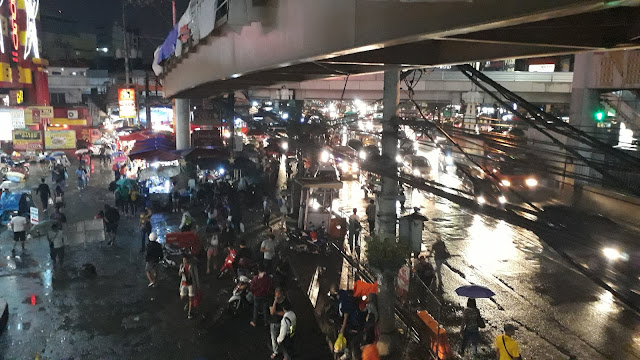I went to Hoi An a few days ago and had quite high expectations of the place, which was built up by the numerous and unavoidable reports I had read online a few days prior. I booked 3 nights in anticipation. Perhaps it would be a bit like Canguu, Bali but without motorcycles?
Hoi An was home to a major trading port; until it wasn't and the town attained a backwater status, halting almost all development and modernisation. It's a neat little place with some very nice narrow streets and shopfronts however it's blessing is also a curse as the old quarter is now almost entirely reliant on the tourism industry and so it can feel quite unauthentic, especially as you walk past a 250m row of stalls all selling tourist trinkets and overpriced Bahn Mi rolls at the Hoi An night market. It felt like being in a heritage theme park with a fusion of tourist oriented consumer goods (possibly from China).
 |
| If I had a remote shutter, this would be better. |
$3.70 NZD per night was the price of my accommodation, which was located just outside the old quarter. I set down my backpack and set out for the central market to grab some lunch.
As I approached the old quarter I started to notice some visual trends - first, the buildings were all painted this distinctive yellow hue, and second I started to notice a proliferation in hand woven handbags, Northface gear, and tailored suits. I looked around me; the only Vietnamese-looking people were storekeepers and 'cyclo' drivers. Foreigners outnumbered locals by about 12 to 1.
The signs and menus for the cafes and restaurants were in English.
'Oh shit, I fell for the trap'.
At some point, a place can become so popular with tourists that over time the makeup of the local economy gradually shifts so that it caters primarily towards tourists, which is kind of like saying they 'sold out'. As a tourist myself I can't really complain as I am part of the problem although I do my part as a conscious consumer and don't buy trinkets or eat at restaurants with normal sized chairs and tables. (Although I did buy a dry bag from one of the shops there - which I managed to haggle 55% off the asking price, although is that really an achievement in Vietnam?)
There are some incredibly good Bahn Mi stalls in Hoi An. Definitely check out at least one of these places out if you are here.
-Madam Khanh - The Banh Mi Queen
-Phi Banh Mi
If you're looking for some traditional Vietnamise foods which aren't Bahn Mi, check out the central market. (They have menus with prices - and they're all reasonably priced). There are about 10 different stalls but they all have the same menu and pricing. Try a different one each time.
If, like me, you booked more that one night in Hoi An and have discovered that you can explore the entire old quarter in less than a day, then perhaps you should consider hiring a bicycle and heading down south across the Thu Bon river to check out the countryside. The bicycles are mostly pieces of shit and have never seen a mechanic in their entire life but they're better than walking. There are plenty of opportunities to take mediocre-at-best photos of the rice paddies.
Or you could just stay in town, buy a dapper suit, and pick up some cheap North Face gear.
If I were on holiday for like 2 or 3 weeks I would, but I have to be hauling that shit around in a backpack across south-east asia so that's not going to happen.





















